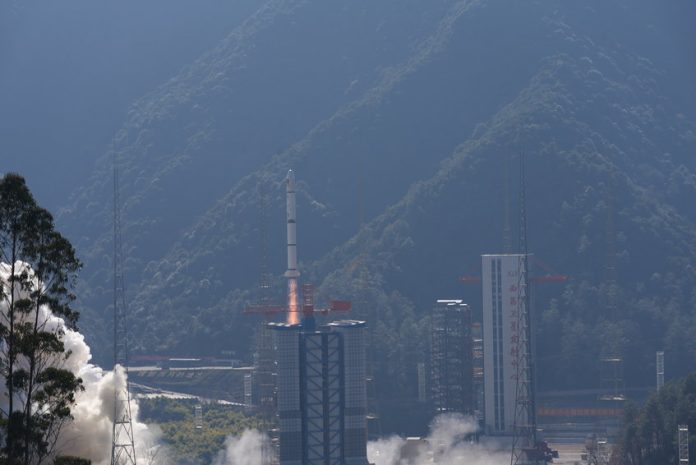Europe and China have announced bilateral co-operation in the study of black holes, CGTN reports.
One of the latest projects to study these cosmic phenomena is the Einstein probe, a Chinese satellite that was built with the help of European technology. Kirpal Nandra, Director of the Max Planck Institute for Extraterrestrial Physics (MPE) in Munich, said:
It’s very exciting as it’s opening up a completely new discovery space. The Einstein Probe is designed to look for explosive transient events in the universe and these arise from some of the most energetic processes out there and are usually associated with objects like neutron stars and especially black holes.
The Einstein Probe satellite was built under the leadership of the Chinese Academy of Sciences. It includes two telescopes: a wide-angle X-ray telescope that takes wide-angle pictures of the sky, and a so-called “follow-up” telescope modelled on the successful MPE eROSITA telescope that detects the details of any explosion.
This more sensitive telescope comprises 54 nested mirrors through which light passes and, on the other side, a special camera with X-ray-sensitive detectors known as CCDs, which are used to produce the images. Nandra said:
The eROSITA is able to tell us the energy of the X-rays that we are seeing and also very precisely the time at which the X-rays were received.
Aware of MPE’s decades of work on sensitive imaging telescopes and spectroscopes for X-rays, Nandra received a call from the head of the Einstein Probe mission in China asking for participation. He adds smiling:
We were delighted to agree. It’s a unique way to use our expertise. It allows us to do things, at least with a factor of 10 more sensitivity then we were able to do in the past and that means there’s a new discovery space that you can open. They might be of a completely different kind that we’ve never been sensitive to in the past.
In exchange for their technology, MPE and the European Space Agency will have access to 10 per cent of the data from the Einstein probe’s observations.
The Einstein probe is now in its fourth month in space, collecting images 600 kilometres above the ground. While this is the first realised collaboration between MPE and the Chinese Academy of Sciences, Nandra said another more ambitious project between the two has been under discussion for some time. He added:
We are hoping that it will very soon be approved in China…
